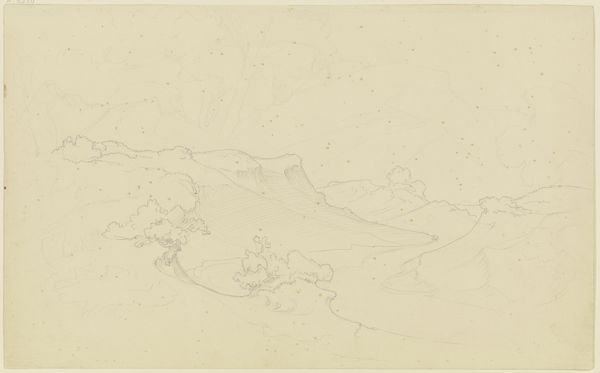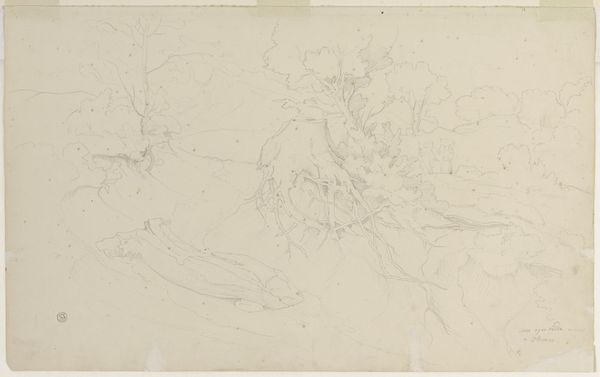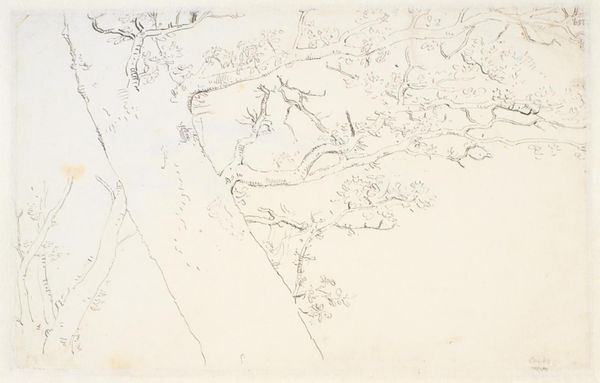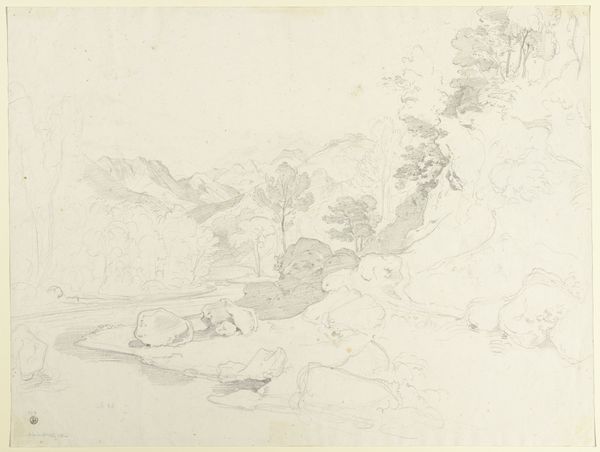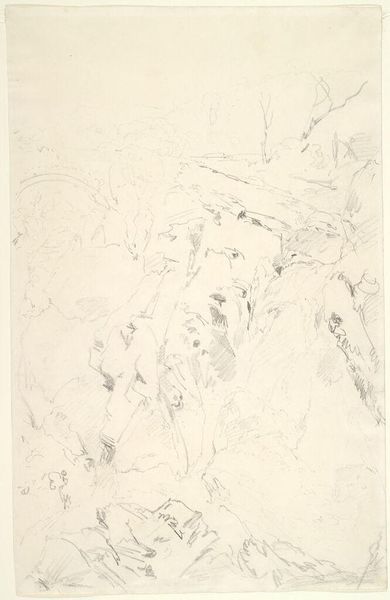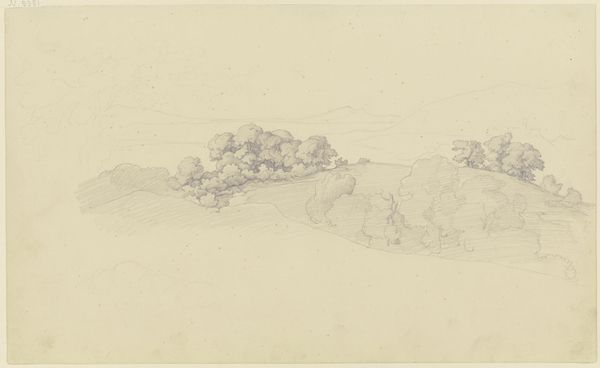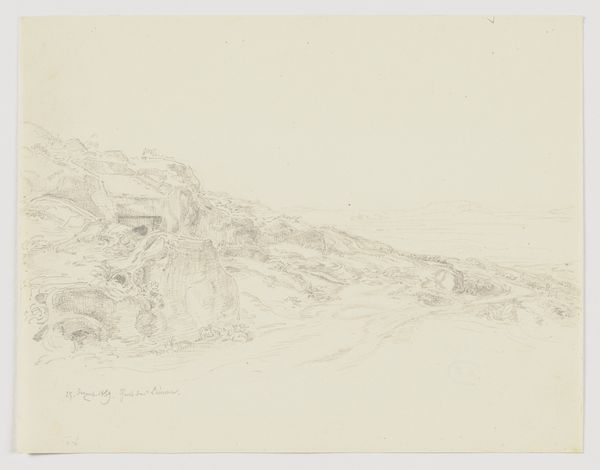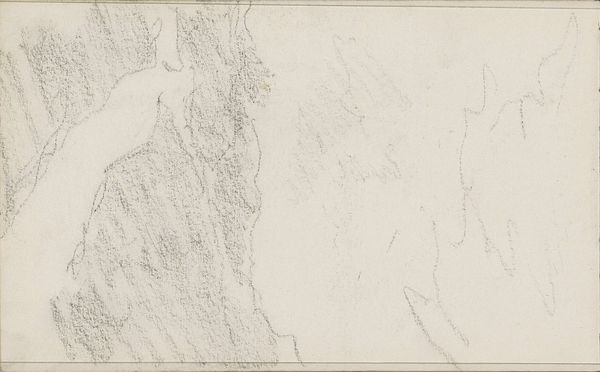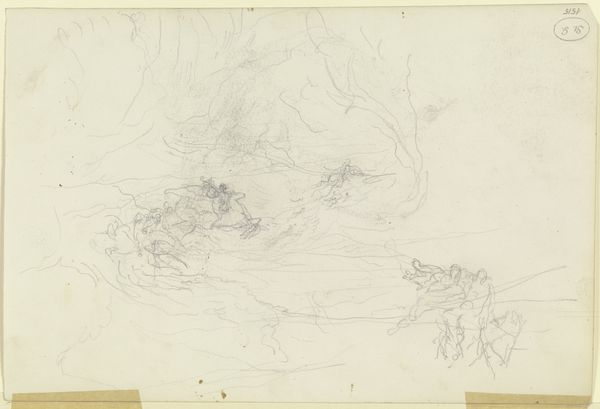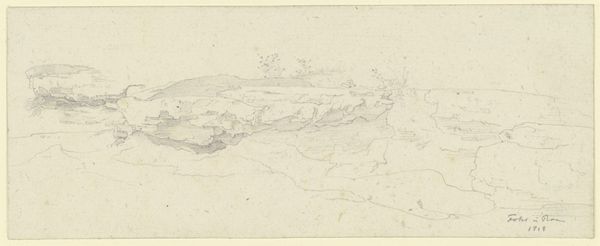
drawing, paper, pencil
#
drawing
#
landscape
#
etching
#
paper
#
romanticism
#
pencil
#
academic-art
Copyright: Public Domain
Curator: Looking at this landscape, it feels incredibly… fleeting. Like a memory just out of reach. Editor: That’s interesting. This is "Studie aus den Sabiner Bergen," or "Study from the Sabine Hills," by August Lucas, created around 1830-1831. It's a pencil drawing on paper. Lucas was really immersed in Romanticism, and landscape was one of its central subjects. Curator: The Romantic period and all its associated complexities… So, how does this quiet study speak to power dynamics or to representation? I mean, even landscapes aren't neutral, right? They're steeped in the gaze of the artist. Editor: Absolutely. The public exhibitions of landscapes often underscored a kind of proprietorship and cultural identity of its audiences, particularly as art became more democratized as a medium for understanding how land ought to be used and viewed. Lucas presents us with the Sabine Hills; we're looking at a depiction of this specific place. Think about who owned this land, what was cultivated on it? The lines in this drawing are also about claiming knowledge, representing authority… This is one of several sketches of landscapes around Italy from his years-long pilgrimage to Rome. Curator: The light touch is compelling and speaks to a certain kind of… well, privilege. He’s passing through. Not living or laboring there. And that shapes the way we engage with this place now, framed through the lens of someone with the means to travel, to sketch, to choose his view. Editor: It's important to consider the artistic institutions of the time as well, how academies shaped the approach to sketching *en plein air* in relation to finished works. Lucas was committed to capturing the landscape through rigorous observation, in order to bring new understandings back to the studio. Curator: Right. We can think about his methods as inherently involved with larger sociopolitical forces that enable his artistic endeavor. This isn't a window onto reality; it's a carefully constructed… point of view. It leaves me wondering how someone local would capture the essence of these hills. Editor: A powerful perspective. I am moved by the study’s place in history as a crucial document in understanding landscape practice. Curator: For me, it reinforces the importance of asking *who* is looking, and *from where*.
Comments
No comments
Be the first to comment and join the conversation on the ultimate creative platform.
